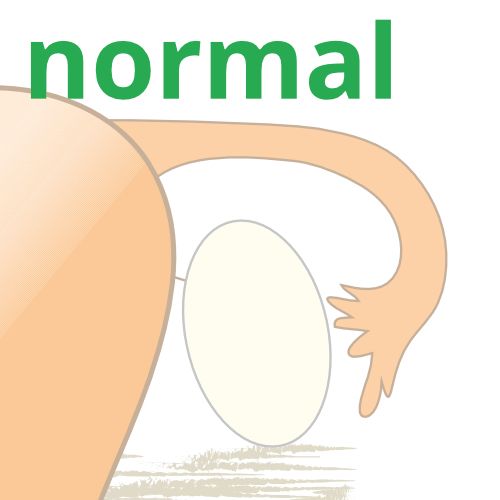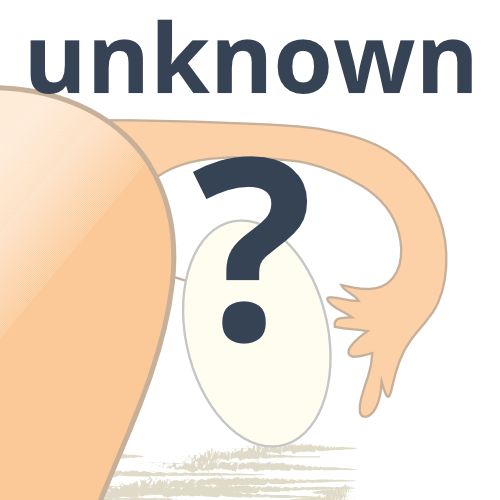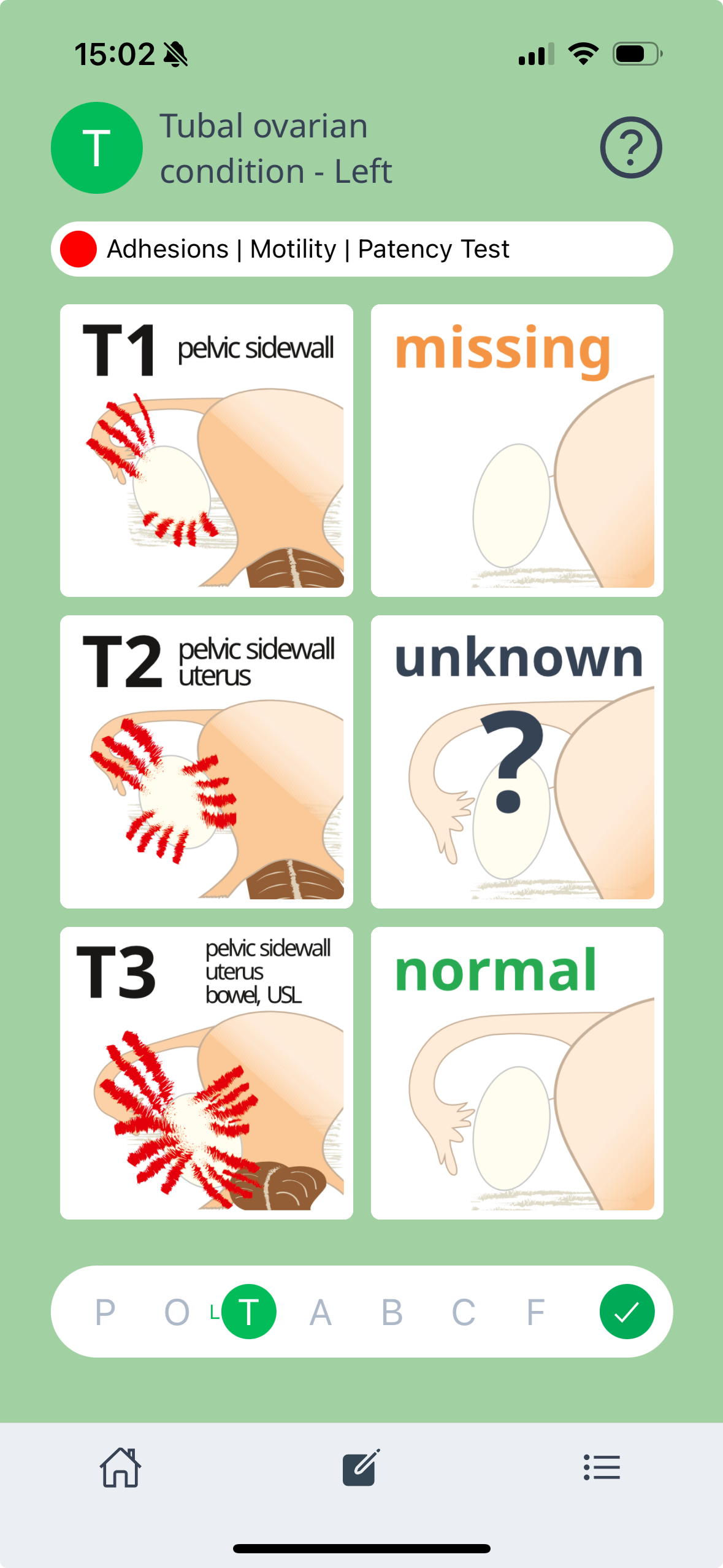In January 2022, I was a approached by a brilliant doctor and good friend of mine who was just getting started as a member of the Stiftung Endometriose-Forschung, a foundation with the mission to raise awareness and understanding of endometriosis.
After listening to my friend's description, I found endometriosis to be a very interesting disease
It is a chronic and often painful condition in which tissue similar to the lining inside the uterus, called the endometrium, starts to grow outside the uterus. This aberrant tissue growth can occur on the ovaries, fallopian tubes, and other areas within the body.
The complex nature of the disease makes diagnosing endometriosis very difficult. The symptoms can vary greatly and often resemble those of other conditions, resulting in diagnostic delays. Treatment is also very difficult, can include pain medication, hormonal therapy, and surgery, but these are not universally effective and can have side effects.
#Enzian
All these inherent complexities made it important to find a "common language" when talking about endometriosis - a classification of sorts, that quickly and comprehensively captured all aspects of it.
Some of the foundation's members - along with other experts in the field - had released a paper containing just that - the #Enzian classification - in 2021.

#Enzian is a classification system for complete mapping of endometriosis, and given the complex nature of the disease, it's only logical that the #Enzian classification itself looks a little complex at first sight.
Explaining the whole classification would probably be a bit overkill for this blog post, but in a nutshell, a #Enzian classification contains letters (P,O,T,A,B,C,F) to denote affected organs/compartments, followed by a number indicating the extent of endometriosis in that respective compartment.
How to promote a (superior) classification?
Among the experts I spoke to, there was unanimous consent that the classification they had developed was superior to existing classifications: It compressed more information into a small string of letters and numbers than competing standards, and it could still give a very detailed and precise description of endometriosis in a patient. But they also agreed that it was a little harder to learn, and that promoting the new classification was crucial for its success.
That is where I came into play. The members of the foundation had come up with the idea to promote the classification with a learning app, and my friend asked me if I wanted to be part of that project. How exactly this app should look and work was unclear at this point, so my involvement started as more of an advisory role, sitting in virtual meetings with members of the SEF and the partnering European Endometriosis League (EEL)
From idea to learning app
Working closely with the scientists that came up with the #Enzian classification, we first developed a few app mockups based on the original classification, and a flow that would introduce medical professionals to #Enzian on a step-by-step basis.

The members of the foundation were pleased with the concept, and after some time I was ultimately tasked with actually developing the app.
I had developed some apps for android in the pas, but for a project like this, a cross-platform approach made a lot more sense. That is why I quickly added Matthias Lexer, an insanely talented and more experienced cross-platform app developer, to the project.
Matthias and I decided to build the app using the Expo platform and React Native, and it proved to be a mostly pleasant experience. Since both Matthias and I have a strong web development background, a cross-platform solution based on JavaScript seemed ideal. Like most JavaScript solutions, it had its weirdnesses, but we managed to overcome them.
Over the next 18 months, all parties involved became part of a loop consisting of planning, review periods and meetings, with each step getting us closer to the shared vision.
Unforseen challenges
As the project got more and more refined, additional challenges appeared.
Originally, another company was tasked with creating explanatory animation videos for each compartment. However, the company couldn't quite deliver the animations that the foundation had in mind.
Since we had access to the original illustrations, I decided to give the animations a try. The experts were pleased with how my demo animation turned out, and so I ended up doing all 6 animations.
An early version of one of the explanatory videos
Illustrations
The illustrations were another story, though. The original classification only contained illustrations for compartments that were affected. However, since we decided to take the classification step-by-step, we also needed illustrations that signaled - for example - that a compartment was unaffected by endometriosis.
We had to create 18 additional illustrations for all possible results that deserved its own illustration, and the additional illustrations made changes to the app layout necessary.



Additional illustrations were made for the app. Here you can see 3 additional illustrations for the T compartment
While I was creating the additional illustrations, I also made some small changes to the existing illustrations, mostly to improve legibility and clarity.
Finetuning the user experience
At the beginning of 2023, we felt like we had really achieved what we originally wanted to do with our app. Users were able to classify endometriosis, step by step and compartment by compartment.
However, we felt that this workflow needed finetuning. Practical examples and early tests proved that having to go through every step for a simple classification wasn't ideal, especially in cases where endometriosis was present in only one or two compartments.
So we altered the app to include a "pill" at the bottom that gave users the opportunity to quickly switch between compartments, or skip compartments altogether. In later revisions, even a check button was added to the end of the pill, which immediatly ended the classification.

Using the pill was optional though, and the base case for new users was still the same: Go through the compartments one by one, and select if there's endometriosis.
This solution proved to be a good middle ground for "beginners" and "advanced users".
Release

We released Version 1 of the #Enzian app for Android and iOS in October of 2023, and it's doing really well. It was downloaded more than a thousand times, which is a great number for an app with such a specific target group.
For me personally, this project was exciting from start to finish, and it confronted me with many tasks I had never done before - my initial role as advisor, creating animations, illustrations, cross-platform app development, ...
However, everyone involved was always patient with each other, and it all came together really nicely in the end. I'm looking forward to extending and improving the app in the coming months, so if you have any feedback , feel free to contact me!
Acknowledgements
I just want to say a bigh "thank you" to the following people for making this app possible:
- Dr. Jörg Keckstein,
- Dr. Julian Metzler,
- Dr. Martin Sillem,
- Dr. Karl W. Schweppe,
- Dr. Harald Krentel
- and all other members of SEF and EEL, as well as all contributors to #Enzian
And one more "thank you" to Matthias Lexer, who is not just a great developer but an absolute pleasure to work with. Highly recommend ;)